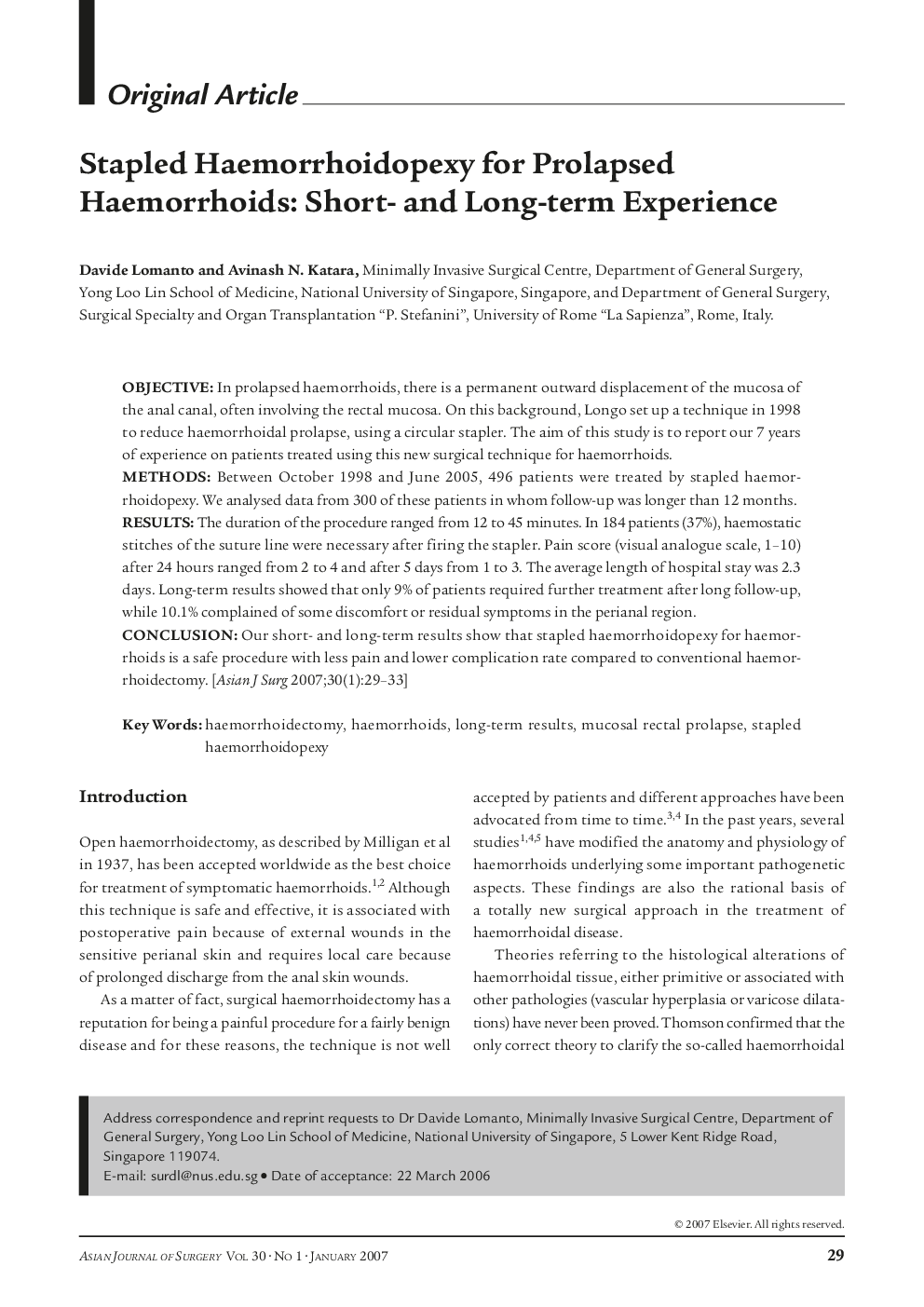| Article ID | Journal | Published Year | Pages | File Type |
|---|---|---|---|---|
| 4282963 | Asian Journal of Surgery | 2007 | 5 Pages |
ObjectiveIn prolapsed haemorrhoids, there is a permanent outward displacement of the mucosa of the anal canal, often involving the rectal mucosa. On this background, Longo set up a technique in 1998 to reduce haemorrhoidal prolapse, using a circular stapler. The aim of this study is to report our 7 years of experience on patients treated using this new surgical technique for haemorrhoids.MethodsBetween October 1998 and June 2005, 496 patients were treated by stapled haemorrhoidopexy. We analysed data from 300 of these patients in whom follow-up was longer than 12 months.ResultsThe duration of the procedure ranged from 12 to 45 minutes. In 184 patients (37%), haemostatic stitches of the suture line were necessary after firing the stapler. Pain score (visual analogue scale, 1-10) after 24 hours ranged from 2 to 4 and after 5 days from 1 to 3. The average length of hospital stay was 2.3 days. Long-term results showed that only 9% of patients required further treatment after long follow-up, while 10.1% complained of some discomfort or residual symptoms in the perianal region.ConclusionOur short- and long-term results show that stapled haemorrhoidopexy for haemorrhoids is a safe procedure with less pain and lower complication rate compared to conventional haemorrhoidectomy.
